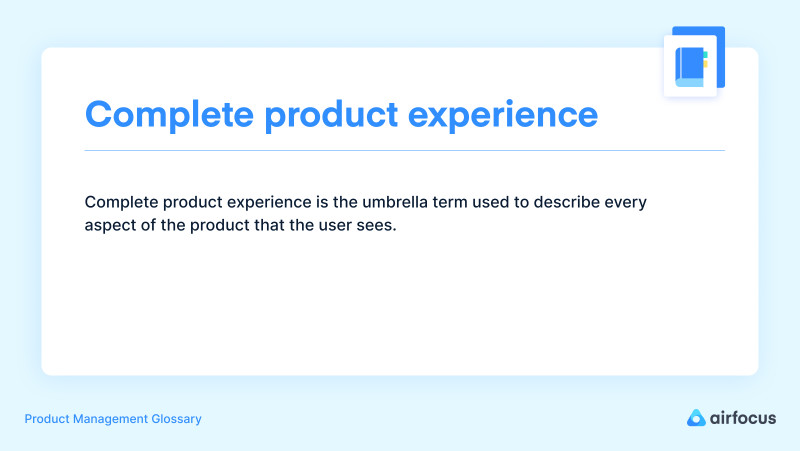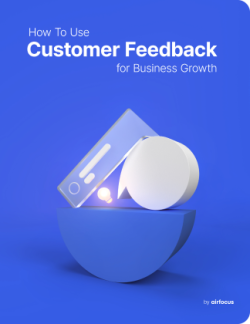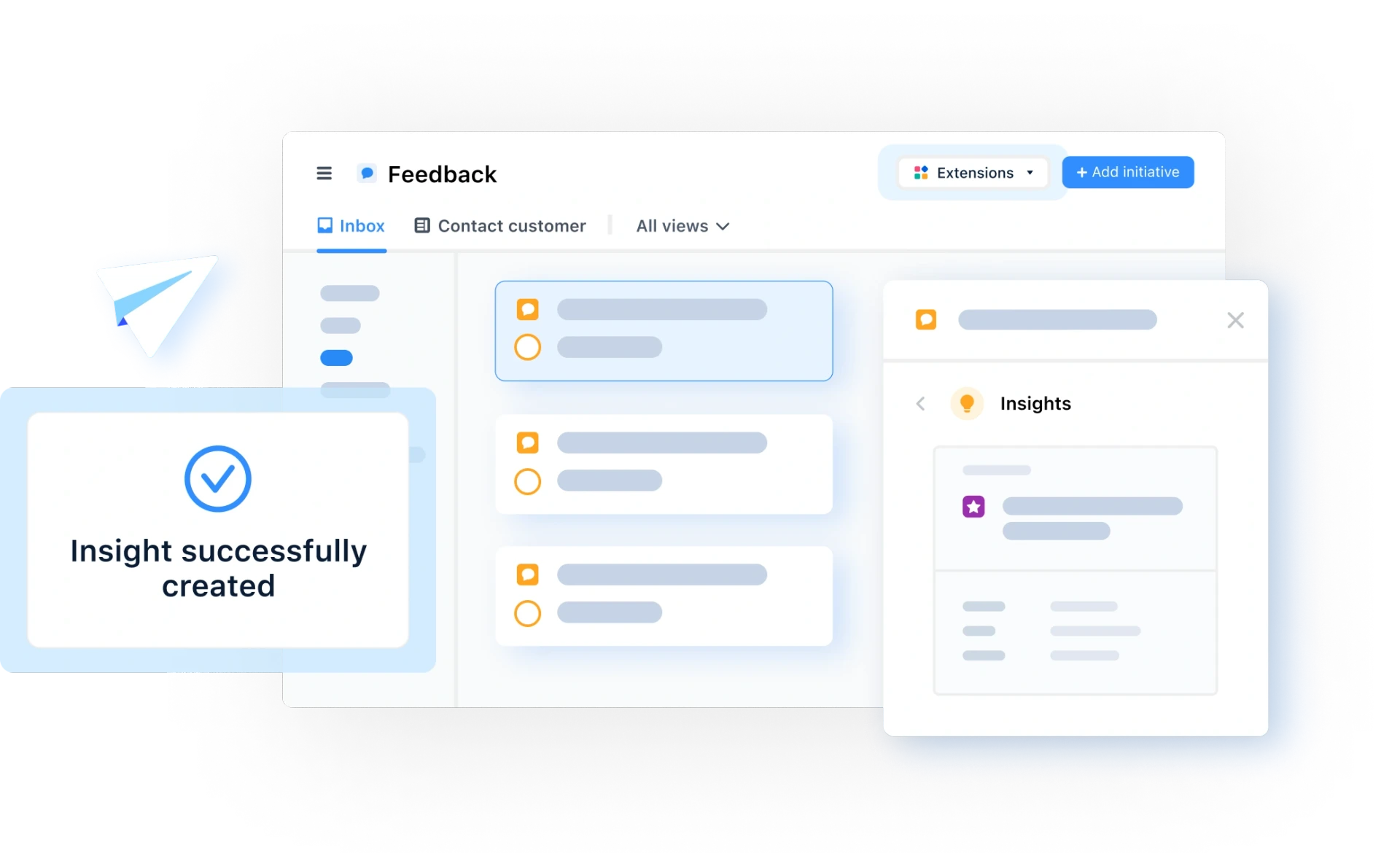Complete Product Experience
What is a complete product experience?
Complete product experience definition
Complete product experience is the umbrella term used to describe every aspect of the product that the user sees. This includes marketing efforts, sales, the onboarding process, customer service, and of course, actual product usage.
Components of a complete product experience
Marketing - Marketing is the first stage of the complete product experience. It’s how your customers will find your product and is responsible for making a good first impression. In this modern age of social media, the marketing stage is all about generating content and casting a wide net on as many platforms as possible.
Sales - The sales stage is how your customers will learn more about the product. This requires a team of empathetic listeners who can identify needs and show how the product addresses them.
Technology - This refers to how your product works. You should be making a smooth and clear user interface (UI) with plenty of functionality.
Supporting systems - Support systems are hidden elements that significantly impact the complete product experience. These are tools like CRM, billing, and analytics platforms.
Third-party integrations - There are so many platforms and apps these days and your product should integrate smoothly with other relevant services. This includes on the business and user side.
Support - Customer support is one of the most vital parts of a complete product experience. Even if nothing goes wrong, you need a strong team of helpful experts on hand so customers can get the most out of their product experience.
Policies - Company policy will describe how your team interacts with your customers. Make sure to implement user-friendly policies that contribute to a great complete product experience.
Complete product experience best practices
Set a clear product vision
Even before development begins, you should be asking yourself what the end goal is for the new product. What are you looking to give your customers? What needs will it address? The clearer your product vision is, the more streamlined and effective you can make the development process.
Use feedback to your advantage
Customers should be the driving force behind the majority of decision-making. This is especially true when adding new features or updating an existing product. After all, it's the users who will decide if the product will be a success.
Know what value your product will bring to users
Customer feedback will quickly pinpoint users’ wants and needs. All you have to do after listening to their feedback is address it. If you’re creating something new, ask yourself how the product or feature will help your customers at every opportunity.
Think holistically about your product
Ultimately, you need to bake customer satisfaction into every single part of your product. Thinking about the complete product experience helps to put the customer at the forefront of all conversations.

General FAQ

Glossary categories
All product feedback in one place

Experience the new way of doing product management








